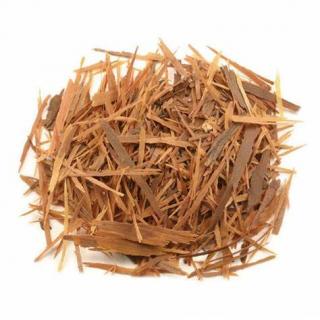
Health and Herbs
Pau d Arco/La Pacho 100g
- Rich in Lapachol and Other Antioxidants.
- Reduces Pain
- Fights Candida.
- Reduces Inflammation.
Pau d’arco, also called taheebo, is an evergreen tree that has rose-colored flowers. There are nearly 100 species of pau d’arco, but only a few yield high-quality material. It takes extremely skilled gatherers to know what species are the most effective.
Pau d'arco may help fight inflammation, according to a study published in the Journal of Ethnopharmacology. The investigation, involving lab mice with medically induced edema (tissue swelling), demonstrated that a water-based extract of pau d'arco was able to block the production of pro-inflammatory compounds known as prostaglandins
The Tabebuia tree has several unique properties. Among them, the bark is highly resistant to rotting, mold, and other common tree pathogens. It has long been assumed that these properties may be beneficial to humans, either by preventing or treating common bacterial, viral, or fungal infections.4
Scientists have been able to isolate compounds in pau d'arco called naphthoquinones, including two known as lapachol and beta-lapachone that are able to kill a wide range of microorganisms.
As bold as the claim may seem, compounds in pau d'arco are believed to inhibit the growth of tumors, at least in the test tube. In a review of studies published in the Journal of Ethnopharmacology, scientists concluded that the beta-lapachone found in pau d'arco was able to trigger apoptosis (programmed cell death) in certain types of cancer cells.2
By way of background, all normal cells undergo apoptosis so that old cells can be replaced with new cells. Cancer cells, however, are "immortal," replicating without end. By triggering apoptosis, cancerous tumors can theoretically be controlled or reversed








